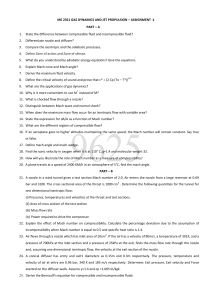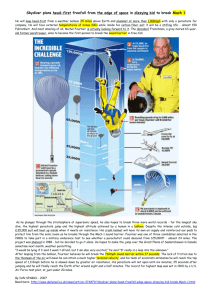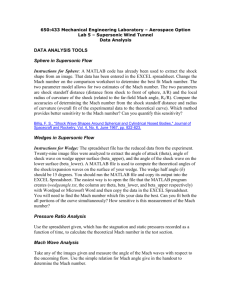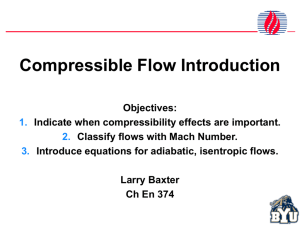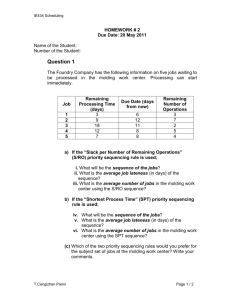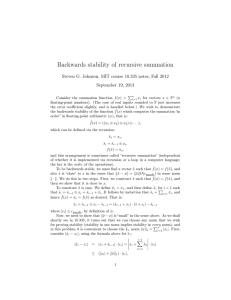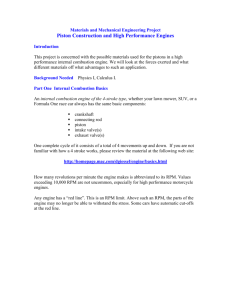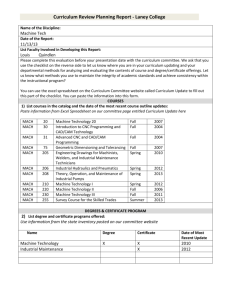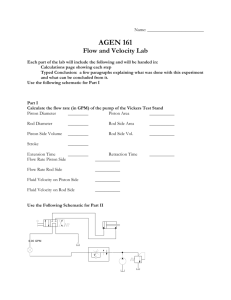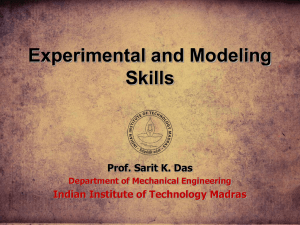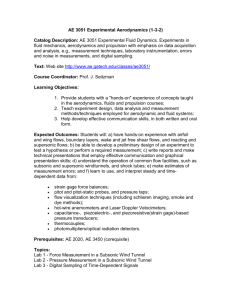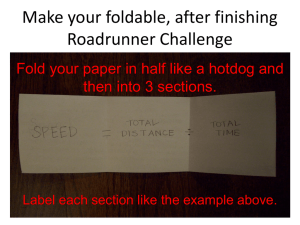Speed of Sound
advertisement
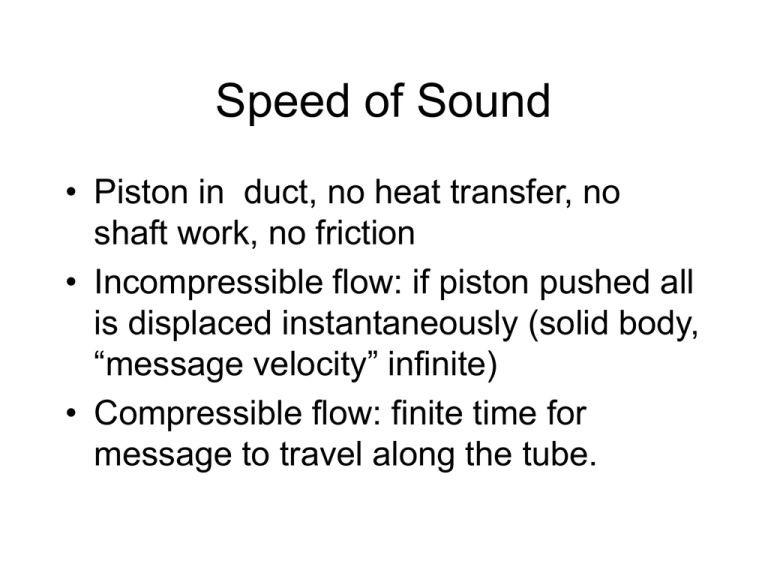
Speed of Sound • Piston in duct, no heat transfer, no shaft work, no friction • Incompressible flow: if piston pushed all is displaced instantaneously (solid body, “message velocity” infinite) • Compressible flow: finite time for message to travel along the tube. Speed of Sound • Layer of air on piston face vp, p+p, + • Piston stopped, pulse of air continues • Ride on the wave; have flow come towards you • Converts to steady flow V=0 p, vp V=v(x) P=p(x) (x) vp=v p, Euler equation: v dv 1 dp dx dx v (1) Continuity: d dv dv (v) 0 v 0 dx dx dx 1 d 1 dv or (2) dx v dx p x x x Equating LHS of (2) & (4) Intensive variable p(,s) 2 p 1 dv 0 v sv dx p p dp d ds s s if isent ropic: dp p dx s x (3) int o (1) : v 1 d dx p (3) dv dx s (5) Two solutions: dv 0 incompressible, v(=c) = dx p 2 dv 2 2. v c implies finite dx s 1. Saw for perfect gas: (4) p RT RT cc s Mach Waves • Point source of sound along a line normal to the screen and the direction of a flow where v>c. v>c • Zone of action wedge shaped, half angle sin1 1 M sin1 c v ct (Mach angle) vt Moving Sound Source Zone of silence Mach cone Zone of action 3rd 2nd 1st Mach Waves, Mach Cones • For single point source the zone of action is a cone with same half angle • Inside wedge/cone is the zone of action • Outside zone of silence • Stronger (finite disturbances) move at speeds > c • Half angles are larger, different for wedge and cone. Velocity - Area Relationship • Flow model: – Reversible, adiabatic (isentropic) – No external work – Steady, 1-D flow • Governing Equations: – Energy equation: 2 v h0 h – Euler Equation vdv – Continuity 2 0 = dh +vdv (1) 1 dp 0 (2) d dv dA vA const . 0 v A (3) Velocity - Area Relationship – 2nd Law of Thermodynamics: ds 0 (4) – Thermal equation of state: Finding the area relationship: (5) 1 1 dp 1 2 vdv dp d c d d pv 0 2 d v v 2 dv 2 dv M 2 dv c c v v (6) Velocity - Area Relationship (6) into (3) dv 1 dA v 1 M 2 A (7) • Physical significance: - for M<1: if A then v dv v 1 0 2 dA A 1 M - for M>1: if A then v - for M=1: 1-M2 = 0 dvonly finite if dA goes to 0 (at throat) Velocity - Pressure Relation dp v 0 dv For all values of M: if v then p Summary • For subsonic flow an increase in area decelerates the flow and vice versa. The increase becomes larger as M increases. • For supersonic flow an increase in area accelerates the flow and vice versa. • Flow can only accelerate from subsonic to supersonic through a throat; can only decelerate from M>1 to M<1 isentropically through a throat. • When flow decelerates, pressure drops.

